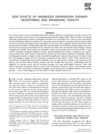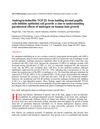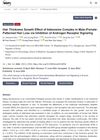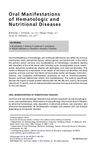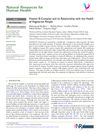Antiandrogenic Activity of Riboflavin 5′-Phosphate (FMN) in 22Rv1 and LNCaP Human Prostate Cancer Cell Lines
January 2022
in “
European Journal of Pharmacology
”
Riboflavin 5′-phosphate FMN dihydrotestosterone DHT androgen receptor prostate specific antigen PSA androgen regulated genes ligand binding domain LBD phosphorylation of Akt androgen-related diseases hirsutism benign prostatic hypertrophy acne vulgaris androgenetic hair loss vitamin B2 androgenic alopecia BPH acne
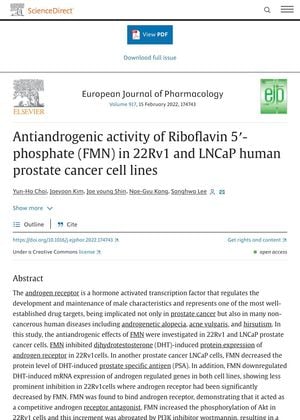
TLDR Riboflavin 5′-phosphate (FMN) shows potential for treating androgen-related conditions but may be limited in treating prostate cancer.
The study investigated the antiandrogenic effects of Riboflavin 5′-phosphate (FMN) in 22Rv1 and LNCaP human prostate cancer cells. FMN was found to inhibit dihydrotestosterone (DHT)-induced protein expression of the androgen receptor in 22Rv1 cells and decrease the protein level of DHT-induced prostate specific antigen (PSA) in LNCaP cells. FMN also downregulated DHT-induced mRNA expression of androgen regulated genes in both cell lines. FMN demonstrated antiandrogenic activities without any apparent cytotoxic effect up to 80 μg/ml concentration. FMN also significantly displaced fluorescent labeled androgen ligand from the ligand binding domain (LBD) of the androgen receptor in a concentration-dependent manner. FMN treatment in the presence of DHT significantly increased the phosphorylation of Akt in a concentration-dependent manner without any change in total-Akt level in 22Rv1 cells. The study concluded that FMN has strong antiandrogenic potential for various androgen-related, noncancerous human diseases, including hirsutism, benign prostatic hypertrophy, acne vulgaris, and androgenetic hair loss. However, the therapeutic use of FMN for treating prostate cancers has limitations as it seems to have no inhibitory activities on the splicing variant of androgen receptor in 22Rv1 cells.

